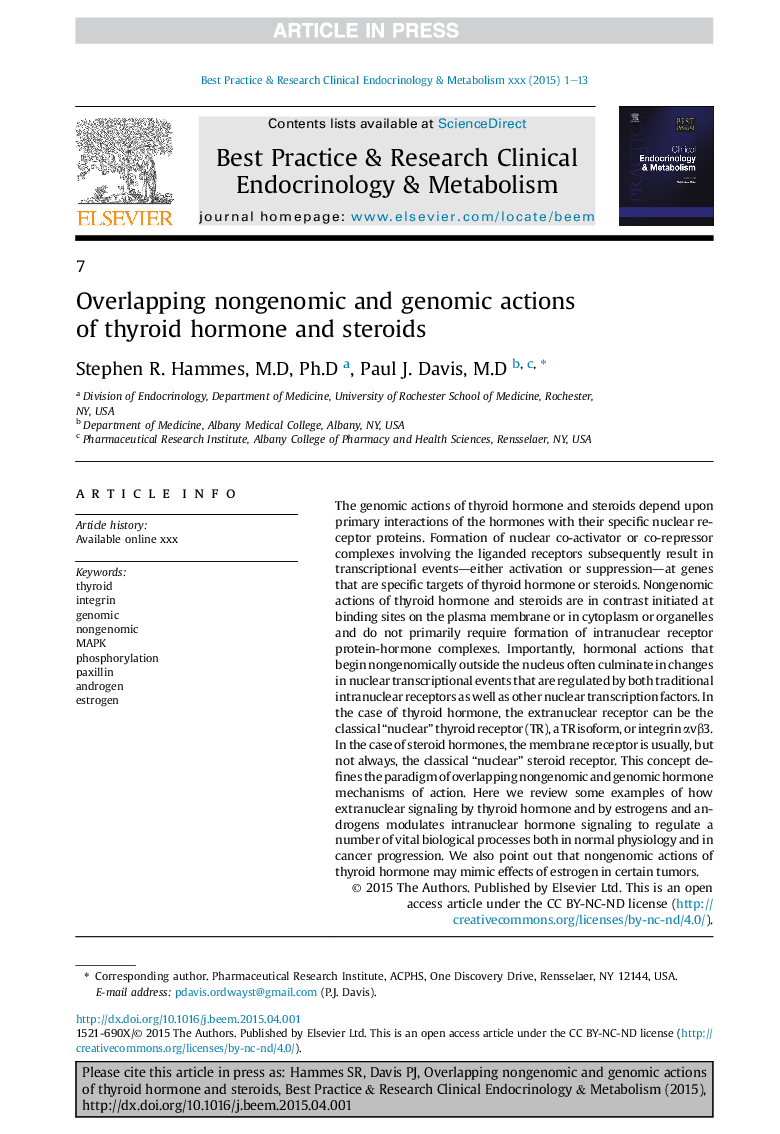| Article ID | Journal | Published Year | Pages | File Type |
|---|---|---|---|---|
| 5896482 | Best Practice & Research Clinical Endocrinology & Metabolism | 2015 | 13 Pages |
Abstract
The genomic actions of thyroid hormone and steroids depend upon primary interactions of the hormones with their specific nuclear receptor proteins. Formation of nuclear co-activator or co-repressor complexes involving the liganded receptors subsequently result in transcriptional events-either activation or suppression-at genes that are specific targets of thyroid hormone or steroids. Nongenomic actions of thyroid hormone and steroids are in contrast initiated at binding sites on the plasma membrane or in cytoplasm or organelles and do not primarily require formation of intranuclear receptor protein-hormone complexes. Importantly, hormonal actions that begin nongenomically outside the nucleus often culminate in changes in nuclear transcriptional events that are regulated by both traditional intranuclear receptors as well as other nuclear transcription factors. In the case of thyroid hormone, the extranuclear receptor can be the classical “nuclear” thyroid receptor (TR), a TR isoform, or integrin αvβ3. In the case of steroid hormones, the membrane receptor is usually, but not always, the classical “nuclear” steroid receptor. This concept defines the paradigm of overlapping nongenomic and genomic hormone mechanisms of action. Here we review some examples of how extranuclear signaling by thyroid hormone and by estrogens and androgens modulates intranuclear hormone signaling to regulate a number of vital biological processes both in normal physiology and in cancer progression. We also point out that nongenomic actions of thyroid hormone may mimic effects of estrogen in certain tumors.
Related Topics
Life Sciences
Biochemistry, Genetics and Molecular Biology
Endocrinology
Authors
Stephen R. M.D, Ph.D, Paul J. M.D,
